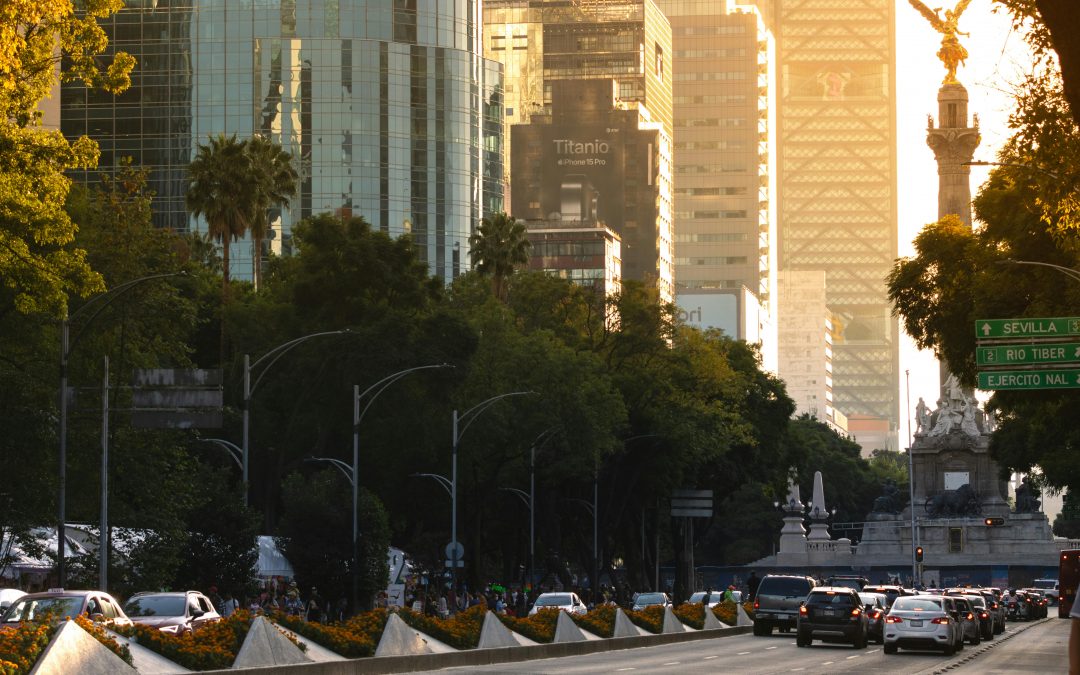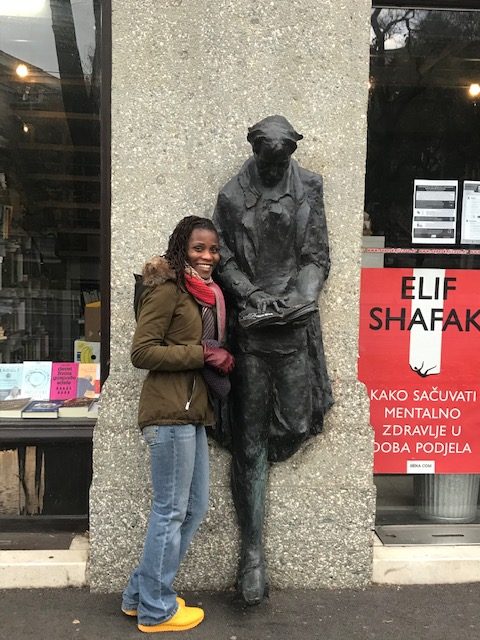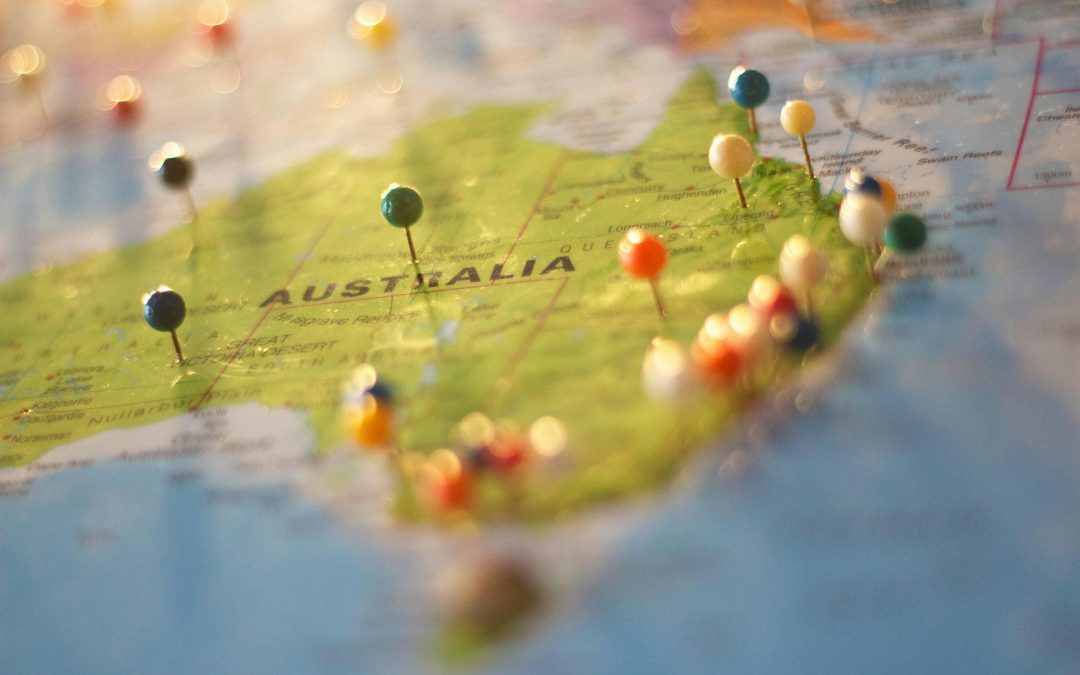Whether you’re hiking through the Scottish Highlands, sunbathing in Bali, or navigating the dry air of a desert retreat, your skin and body respond to the environment. Travel exposes us to new climates, altitudes, and stressors—and our beauty routines need to adapt.
A team of globetrotting experts tested hundreds of products across climates and continents. The result? A curated list of skincare, wellness, and grooming essentials that truly go the distance.
This blog post explores how to build a climate-conscious beauty routine—one that’s portable, purposeful, and powerful. Whether you’re packing for a tropical escape or a snowy summit, we’ve got you covered.

The 10 Best Destinations to Visit

The 10 Best Destinations to Visit in 2025: A Field‑Tested, Shoulder‑Season Friendly Guide
From Arabia’s ochre wadis to New Zealand’s glacier‑fed lakes, this is your definitive, playbook for choosing, timing, and savoring 2025’s most rewarding trips—curated with a mix of classic icons and fresh, editor‑backed picks.
How this list was built: I cross‑referenced the Outlook travel family’s 2025 features (which spotlight deep, on‑the‑ground destination guides) with independent global roundups and trend reports to triangulate both timing and experience quality. The result favors shoulder seasons, novel experiences, and places balancing infrastructure with authenticity.
1) Oman — Arabia’s Soft Power of Hospitality
Why go now
Oman is what much of the Arabian Peninsula looked like before mega‑projects: quiet fort towns, incense markets, and wadis you actually hear before you see. Between Muscat’s seaside corniche, the Hajar Mountains (Jebel Akhdar/Jebel Shams), and the Wahiba Sands, the country’s variety rewards a slow week over a quick city break. Unlike some neighbors, Oman’s development has skewed toward sustainable luxury and low‑impact desert/lodge stays—ideal for travelers who want immersion without spectacle. [outlooktravelmag.com]
Best time
October–April for cooler mountain and desert nights. Summer is intense in the interior.
Essential experiences
- Wadi Shab/Wadi Tiwi: canyon pools, short hikes, a hidden cave waterfall.
- Nizwa Friday market: goats, dates, and silver—old Oman at full color.
- Jebel Akhdar terraces: pomegranate and rose‑water villages with eco‑lodges perched over wadis. [outlooktravelmag.com]
2‑day micro‑itinerary
Day 1: Muscat’s Sultan Qaboos Grand Mosque → Mutrah Corniche sunset walk → seafood mezze.
Day 2: Dawn drive to Nizwa souk → Birkat Al Mouz falaj walk → Jebel Akhdar viewpoints → stargaze from your clifftop hotel.
Travel smart
Self‑drive is easy; roads are excellent. Plan conservative driving windows in mountain roads after dark.
2) Galápagos Islands, Ecuador — Evolution, Unplugged
Why go now
The Galápagos are the rare place where wildlife curiosity overrides human schedule. September/October can deliver cooler seas and fewer crowds, with nutrient‑rich waters boosting activity (think penguins darting past your fins). Live‑aboard itineraries knit together uninhabited islands, while land‑based stays on Santa Cruz/San Cristóbal suit travelers who prefer to sleep ashore. [outlooktravelmag.com]
Best time
Year‑round—with two seasons. For fewer people and active marine life, the cool/dry season (June–Nov) shines.
Essential experiences
- Snorkel with sea lions at Kicker Rock or Los Túneles.
- Hike volcanic calderas on Isabela; meet giant tortoises at breeding centers.
- Night skies from boat decks—zero light pollution. [outlooktravelmag.com]
Travel smart
Permits, park rules, and guide ratios are strict (good!). Book licensed operators early; double‑check routes to include your must‑see species.
3) Luxembourg — Pocket‑Sized Europe with Big‑City Polish
Why go now
Luxembourg City squeezes medieval fortifications, sky‑bridges, leafy gorges, and a genuinely cosmopolitan food scene into an easy weekend. Venture east to Mullerthal, dubbed “Little Switzerland,” for sandstone gorges and mossy fairy‑tale trails. It’s a perfect add‑on to a Benelux/Alsace loop or a low‑stress base with top public transport and multilingual ease. [outlooktravelmag.com]
Best time
April–June and September–October for crisp air and colorful forests.
Essential experiences
- UNESCO Old Quarters and Casemates du Bock.
- Echternach–Mullerthal hiking circuits.
- Riesling tastings along the Moselle. [outlooktravelmag.com]
Travel smart
Public transport is free nationwide—a delight for day‑tripping hikers. Book weekends early; rooms are limited in the countryside.
4) Namibia — The Anatomy of Silence
Why go now
Namibia is Africa’s masterclass in negative space: endless Namib Desert dunes, fossilized valleys, shipwrecked coastlines, and Etosha’s waterholes where oryx, elephant, and lion stage twilight vignettes. Tourism leans toward small camps with stellar guides, kept intentionally low‑density to protect fragile ecosystems. [outlooktravelmag.com]
Best time
May–October for dry season wildlife; April/November for shoulder‑season softness.
Essential experiences
- Sossusvlei/Deadvlei: hike “Big Daddy” dune at dawn; photograph camel‑thorn silhouettes.
- Skeleton Coast flightseeing: read shipwreck scars from the sky.
- Etosha waterholes at dusk—park benches as theater seats. [outlooktravelmag.com]
Travel smart
Self‑drive is popular but distances are vast; plan redundant fuel/water. Book hybrid lodge + mobile safari to balance comfort with reach.
5) Grenada — The Caribbean with Roots Showing
Why go now
Grenada resists the cookie‑cutter Caribbean script. You get classic beaches but also mangrove creeks, rainforests that smell like nutmeg cake, and genuine street‑corner smiles. It’s also a ramp for divers—reefs, wrecks, and the photogenic Underwater Sculpture Park. [outlooktravelmag.com]
Best time
December–April (dry); May/June shoulder season is beautiful with better rates.
Essential experiences
- Grand Anse at sunrise; Gouyave fish Friday by night.
- Rainforest spice trails in the interior; chocolate estates to sip and tour.
- Snorkel the sculptures off Molinière Bay. [outlooktravelmag.com]
Travel smart
It’s hilly—budget for taxis/car rental if you want to roam. Book smaller inns or eco‑lodges for a community vibe.
6) Gibraltar — A One‑Rock World Tour
Why go now
Part fortress, part nature reserve, Gibraltar is where a day’s walk ricochets from Moorish castle to WWII tunnels to Mediterranean balconies. The Rock’s upper reaches house Barbary macaques, Europe’s cheekiest primates, and views fan out to Africa on clear days. Compact and walkable, it’s an unusual Mediterranean detour that pairs easily with Andalucía or the Costa del Sol. [outlooktravelmag.com]
Best time
March–May and September–November—pleasant temps, gentler crowds.
Essential experiences
- Mediterranean Steps hike.
- St. Michael’s Cave sound‑and‑light show.
- Moorish Castle + WWII tunnels for time‑layered history. [outlooktravelmag.com]
Travel smart
Border waits can vary; carry passports even on day‑trips from Spain. Book timed entries for caves/tunnels in peak months.
7) Montréal, Canada — A Four‑Season Culture Engine
Why go now
Montréal mixes Old‑World façades with indie festivals, cutting‑edge gastronomy, and parks stitched by riverfront bike paths. Autumn brings crisp air, markets, and maple‑tinged weekenders to the Laurentians. The city’s bilingual pulse and neighborhood mosaics (Plateau, Mile‑End, Little Burgundy) make it endlessly explorable. [outlooktravelmag.com]
Best time
September–October for color; June–July for festivals.
Essential experiences
- Old Montréal sunrise walk; Notre‑Dame Basilica light show.
- Jean‑Talon Market tastings; Mile‑End bagels vs. smoked meat.
- Mount Royal sunset steps; Lachine Canal biking. [outlooktravelmag.com]
Travel smart
Buy a 3‑day OPUS pass; use BIXI bikes to stitch neighborhoods together.
8) Kyoto, Japan — Rituals Between Seasons
Why go now
Spring cherry blossom may be famous, but September in Kyoto whispers—temples are calmer, foliage begins subtle shifts, and traditional neighborhoods breathe without the crush. Cultural festivals return, tea rooms feel unhurried, and the first autumn flavors creep onto kaiseki menus. [travelupo.com]
Best time
Late Sept–Nov for autumn architecture of color; March–April if blossoms are non‑negotiable.
Essential experiences
- Fushimi Inari at dawn; Kiyomizu‑dera terraces at twilight.
- Tea ceremony in Gion; Arashiyama bamboo on a rainy weekday.
- Day‑trips to Uji (matcha) or Nara (temples + deer). [travelupo.com]
Travel smart
Use the ICOCA card for transit; book temples with timed entries if available; learn three phrases—sumimasen, arigatō, onegaishimasu—and watch doors open.
9) Santorini, Greece — The Caldera in Soft Focus
Why go now
In September, Santorini still wears bright light but loses summer’s elbow‑to‑elbow crush. The Aegean stays swim‑warm; harvest season spices wine tours; and clifftop villages, from Oia to Imerovigli, exhale enough that you can hear church bells again. [travelupo.com]
Best time
May–June, September–October for weather + space balance.
Essential experiences
- Hike Fira → Oia along the rim; time it for sunset finish.
- Assyrtiko wine tastings in Pyrgos/Megalochori.
- Ammoudi Bay swims and grilled octopus lunches. [travelupo.com]
Travel smart
Stay in Imerovigli for sweeping views without Oia prices. Book early‑morning photo sessions to have lanes to yourself.
10) Queenstown, New Zealand — The Pulse of the Southern Alps
Why go now
Queenstown is equal parts adrenaline and pastel‑calm. Mornings can be jet‑boat roars; evenings, Central Otago pinot over mirror‑still lake light. With Fiordland doable as a day trip and Arrowtown a 20‑minute hop for gold‑rush charm, you can base in one spot and touch several worlds. [gowanderly.com]
Best time
November–April for tramping and lake days; June–September for snow.
Essential experiences
- Ben Lomond summit or Skyline gondola + luge for a lighter leg day.
- Glenorchy road: every bend a film still.
- Milford Sound flight‑cruise‑flight splurge on a bluebird day. [gowanderly.com]
Travel smart
Book the big‑ticket adventures early (bungy, Milford flights). Build buffer days—South Island weather calls audibles.
How to Choose Among the 10 (Without Getting FOMO)
You want wildlife + water: Galápagos (marine life, permits, guided access) vs. Namibia (land wildlife, self‑drive).
You want culture layers in compact spaces: Luxembourg, Gibraltar, Montréal.
You want landscapes + low crowds: Oman (Oct–Apr), Namibia (May–Oct), Queenstown (Nov–Dec shoulder).
You want cuisine you’ll dream about later: Kyoto (kaiseki, tea), Montréal (market‑to‑table), Grenada (spice/chocolate). [outlooktravelmag.com], [travelupo.com]
Smart Timing: Why Shoulder Season Wins in 2025
Multiple 2025 roundups and planning guides spotlight shoulder‑season travel (late spring/early autumn in each hemisphere) for better prices, easier restaurant reservations, and fewer queues at signature sites. Lists from seasoned travel editors and data‑driven outlets alike highlight September as a “golden” month for Europe and East Asia, while southern destinations (Namibia, New Zealand) balance weather with availability outside peak holiday weeks. [thepointsguy.com], [muchbetter…ntures.com]
On‑the‑Ground Playbook (Works Across All 10)
1) Build an anchor ritual per day
In Kyoto, a dawn shrine walk; in Oman, sunset tea facing an empty wadi; in Queenstown, a lakefront stroll at blue hour. One ritual = a memory hook.
2) Spend, then save (strategically)
Splurge on the experience you’ll retell (Milford flight, private Galápagos snorkeling guide, desert camp under a billion stars); economize on transit days. This mirrors 2025’s “bliss travel” trend—intentional high‑impact moments over constant luxury. [forbes.com]
3) Book the bottlenecks early
- Galápagos boats/permits and naturalist guides.
- Kyoto’s boutique ryokans and tea ceremonies.
- Queenstown’s adventure slots and Milford scenic flights. [outlooktravelmag.com], [travelupo.com], [gowanderly.com]
4) Use shoulder‑season weather windows
- Santorini: late Sep water is warm, crowds thin.
- Montréal: late Sep markets + clear air.
- Luxembourg/Mullerthal: October leaves + empty trails. [travelupo.com], [outlooktravelmag.com]
5) Respect living places
Churches, temples, wildlife zones: learn simple etiquette (head cover where appropriate, shoes off, quiet zones; observe park distances and no‑flash policies). Your photos will be better; your welcome, warmer.
Mini‑Itineraries You Can Copy‑Paste
A) 10 Days of Desert & Sea (Oman + Dubai Gateway)
- D1–2 Muscat: Mosque, Mutrah, Qantab beach.
- D3–4 Nizwa & Jebel Akhdar: Souk Friday, terrace villages, wadi viewpoints.
- D5 Wahiba Sands: Camel sunset, Bedouin dinner, star baths.
- D6–7 Sur & Wadi Shab/Tiwi: Coastal hike + sinkholes.
- D8–10 Extra day Musandam (if flights align) or Muscat spa day + flight out. [outlooktravelmag.com]
B) 9 Days on the Rim (Santorini + Crete)
- D1–3 Santorini: Caldera trail, Ammoudi swims, Pyrgos winery.
- D4–8 Crete (Heraklion/Chania): Minoan sites, Samaria Gorge, Balos Lagoon.
- D9 Athens layover for museum sprint. [travelupo.com]
C) 12 Days of Quiet Luxury (Namibia Self‑Drive)
- D1–2 Windhoek → Sossusvlei: Deadvlei at dawn.
- D3–4 Swakopmund/Skeleton Coast flight.
- D5–7 Damaraland: Desert elephants, petroglyphs.
- D8–11 Etosha: East–west waterhole circuit.
- D12 Return + city craft market. [outlooktravelmag.com]
D) 7 Days of Temples & Tea (Kyoto Core + Uji/Nara)
- D1 Fushimi Inari sunrise; Nishiki market lunch.
- D2 Kiyomizu‑dera twilight; Gion tea ceremony.
- D3 Arashiyama on a rainy weekday; Otagi Nenbutsu‑ji.
- D4 Uji matcha immersion.
- D5 Nara day‑trip; Kasuga Taisha lanterns.
- D6 Philosopher’s Path; nanzen‑ji gardens.
- D7 Free day for artisan workshops. [travelupo.com]
Responsible Travel Notes (Because Good Trips Do No Harm)
- Galápagos: Choose operators with strong conservation credentials; strictly follow guide instructions (distance to wildlife, no crumbs, no drones). [outlooktravelmag.com]
- Namibia: Stick to tracks; pack out all waste; support conservancy‑run camps. [outlooktravelmag.com]
- Oman/Santorini/Kyoto/Montréal: Respect prayer times, residential quiet hours, and “no photo” signs; buy from local makers instead of chain souvenir shops. [travelupo.com], [outlooktravelmag.com]
Quick‑Glance Planning Table
Use this as a cheat sheet when comparing windows and anchor experiences.
| Destination | Best Window (2025) | Anchor Experience | 2 Budget Savers |
|---|---|---|---|
| Oman | Oct–Apr | Wadi Shab & Jebel Akhdar terrace villages | Self‑drive; eat at local “coffee shops” |
| Galápagos | Jun–Nov (cooler seas) | Snorkel with sea lions & penguins | Land‑based base + day boats; shoulder dates |
| Luxembourg | Sept–Oct | Mullerthal trails + UNESCO Old Quarters | Free public transport; picnic lunches |
| Namibia | May–Oct | Sossusvlei dunes + Etosha waterholes | Mix camping with lodge nights; self‑drive |
| Grenada | Dec–Apr (dry) / May–Jun (shoulder) | Underwater Sculpture Park + spice estates | Local minibuses; guesthouses |
| Gibraltar | Mar–May & Sep–Nov | Mediterranean Steps hike | Walk or bus everywhere; day‑trip from Spain |
| Montréal | Sep–Oct (fall) | Markets + Mount Royal at sunset | BIXI bikes; OPUS transit pass |
| Kyoto | Late Sep–Nov (autumn) | Dawn shrine walks + tea ceremony | ICOCA transit; neighborhood business hotels |
| Santorini | May–Jun, Sep–Oct | Caldera rim hike; Assyrtiko tastings | Base in Imerovigli or Pyrgos; bus network |
| Queenstown | Nov–Apr (hiking) / Jun–Sep (snow) | Milford Sound flight‑cruise‑flight | Free lakeside trails; cook a few meals |
Bonus: A UNESCO Day in Goa (for Faith & Architecture Fans)
If your 2025 travels run through India, add a day in Old Goa: the Churches and Convents of Goa form a compact UNESCO ensemble, anchored by the Basilica of Bom Jesus (tomb of St. Francis Xavier) and the Sé Cathedral. It’s a powerful, contemplative counterpoint to the beach narrative and an instructive look at how Baroque, Mannerist, and Manueline forms traveled across oceans.
Sources & Further Reading
-
Outlook travel family (2025 guides and current features):
— Outlook Traveller Aug–Sep 2025 hub (global & India features; spiritual travel theme anchoring several of the destinations above).
— Outlook Travel Magazine Issue 22 (Sept 2025) destination guides for Oman, Galápagos, Luxembourg, Namibia, Grenada, Gibraltar, Montréal. [outlooktraveller.com] [outlooktravelmag.com] -
Independent lists & timing intel (2024–2025):
— Shoulder‑season picks & “where to go in 2025” roundups emphasizing September/early autumn travel and new‑for‑2025 experiences.
— September/late‑summer destination spotlights for Kyoto and Santorini, with practical timing tips.
— Queenstown/NZ adventure and bucket‑list destination features for 2025 travelers.
— UNESCO Churches & Convents of Goa official description; Basilica of Bom Jesus background. [thepointsguy.com], [muchbetter…ntures.com] [travelupo.com] [gowanderly.com]
Final Word: How to Make 2025 Your Best Travel Year Yet
Pick one destination where the land teaches you something (Namibia’s silence, Galápagos’ curiosity). Add one where culture greets you at street level (Montréal’s markets, Kyoto’s tea). And finish with one that becomes your annual tradition (Oman’s wadi dips, Queenstown’s lake walks). Book the bottlenecks early, lean into shoulder seasons, and protect the places you love by traveling gently.

Written by Kariss
More From This Category

Wellness Essentials

Wellness Essentials
Whether you’re hiking through the Scottish Highlands, sunbathing in Bali, or navigating the dry air of a desert retreat, your skin and body respond to the environment. Travel exposes us to new climates, altitudes, and stressors—and our beauty routines need to adapt.
A team of globetrotting experts tested hundreds of products across climates and continents. The result? A curated list of skincare, wellness, and grooming essentials that truly go the distance.
This blog post explores how to build a climate-conscious beauty routine—one that’s portable, purposeful, and powerful. Whether you’re packing for a tropical escape or a snowy summit, we’ve got you covered.

Wellness Essentials
Whether you’re hiking through the Scottish Highlands, sunbathing in Bali, or navigating the dry air of a desert retreat, your skin and body respond to the environment. Travel exposes us to new climates, altitudes, and stressors—and our beauty routines need to adapt.
A team of globetrotting experts tested hundreds of products across climates and continents. The result? A curated list of skincare, wellness, and grooming essentials that truly go the distance.
This blog post explores how to build a climate-conscious beauty routine—one that’s portable, purposeful, and powerful. Whether you’re packing for a tropical escape or a snowy summit, we’ve got you covered.
Comments
Our Newsletter

